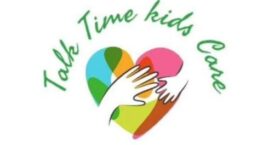Oral Placement Therapy (OPT) is a therapeutic approach designed to improve speech, language, and feeding skills by focusing on the muscles and movements of the mouth, jaw, and tongue. It was developed by speech-language pathologist Sara Rosenfeld-Johnson and is primarily used with individuals who have motor speech disorders, oral motor deficits, or feeding difficulties.

Components of Oral Placement Therapy:
Assessment and Evaluation:
The therapist assesses the individual’s oral motor skills, including strength, coordination, range of motion, and motor planning abilities.
Speech and feeding behaviors are also evaluated to determine specific areas of concern.
Targeted Exercises:
OPT uses a series of exercises and activities that target specific muscle groups and movements involved in speech and feeding.
These exercises are often designed to improve muscle tone, flexibility, and coordination.
Tools and Techniques:
Therapists use various tools such as horns, straws, whistles, and oral-motor chewy tools to facilitate specific movements and improve muscle control.
Techniques may include tactile cues, shaping, and prompting to teach correct oral movements and positions.
Integration with Speech and Language Goals:
OPT is integrated with traditional speech and language therapy goals to improve articulation, speech clarity, and overall communication skills.
It may also address swallowing difficulties and sensory issues related to feeding.
Home Program:
A crucial aspect of OPT is the development of a home program that includes exercises and activities for daily practice.
Family members and caregivers are trained to support the individual’s progress outside of therapy sessions.
Progress Monitoring:
Therapists regularly monitor progress through observations and reassessment of oral motor skills and functional abilities.
Adjustments are made to the therapy plan based on the individual’s response and development.
Who Benefits from Oral Placement Therapy?
Children and Adults:
OPT can benefit individuals of all ages who have motor speech disorders (such as apraxia of speech), oral motor deficits (weaknesses or poor coordination of oral structures), feeding difficulties (sensory or motor-based), or those who require assistance with speech clarity and articulation.
Criticism and Controversy:
OPT has been both praised for its structured approach and criticized for lacking empirical evidence supporting its effectiveness compared to traditional speech therapy methods.
Some critics argue that OPT may overemphasize motor exercises at the expense of functional communication outcomes.
Conclusion of The Article
Oral Placement Therapy remains a widely used therapeutic approach, particularly in cases where traditional speech therapy methods have been less effective in addressing motor speech and feeding issues. As with any therapeutic intervention, its application should be based on individual assessment and tailored to meet specific therapeutic goals.
